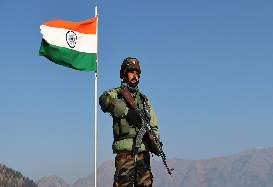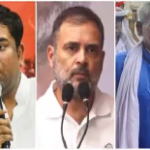EDITOR : KARTIK BOMMAKANTI
Military reforms have been a long pending requirement for post-Independence India. Under the Narendra Modi government in the past decade, crucial decisions were made in the defence reform front. These reforms—which are yet to be fully implemented and are undergoing refinement—will have a significant impact on the way the Indian armed forces synergise cooperation in training, conduct joint exercises, use resources efficiently, and forge combined arms cooperation to effectively execute warfighting missions. India’s defence procurement and industry have also been the target of reforms under the Modi government in the last ten years; some progress is now visible.
Yet defence reforms have their demands and face multiple challenges. As it is in a democracy, India’s armed services follow the “ideal” Huntingtonian model imbued with a strong corporate identity subordinate to civilian control and have little impact on the survival of the civilian leaders or their political future. Under this model, military services have little bargaining power vis-à-vis the state; at most, the military can define its role and express its interests. Fundamentally, according to Huntington, the military—which includes all the service branches—can influence decisions made by civilians without coercion.
Consistent with this model to which India generally conforms, the latest round of defence reforms under Modi have been influenced by one or more of the three services. For instance, the Modi government’s move to establish Integrated Theatre Commands (ITCs) has come under resistance from the Indian Air Force (IAF), which refuses to subordinate its assets and personnel to the ITC commander, who may be from the Indian Army (IA) or the Indian Navy (IN) for reasons related to the IAF’s “meagre” assets and the “indivisibility of airpower” to the extent that the IAF deems that its operational functions cannot be discretely divided into “strategic, tactical, or defensive”.The Modi government has found the IAF’s case to be persuasive and appears to have conceded to its plea. Similarly, the IA is reviewing the Agniveer scheme, introduced in 2022 as a key part of the government’s defence reform to reduce personnel costs incurred by the IA and the other services. Such a review would involve raising the retention limit of 25 percent of recruits following their four-year stint to possibly 50 percent. Although the review is yet to be completed, the Agniveer scheme appears set to undergo some change, but not abandonment.
This Special Report offers a timely analysis of the state of defence reforms under the Modi government.
Manoj Joshi opens the report with an essay that recounts the history of defence reforms in India post-Independence. Atul Kumar, in his chapter, shows the impact of the People’s Liberation Army (PLA) higher command reforms on India. This is followed by an essay authored by Laxman Kumar Behera, which analyses the slew of reforms implemented by the Modi government that have had an impact on India’s defence procurement and defence ecosystem.
In the fourth chapter, Anushka Saxena explores the Higher Defence Organisation (HDO) reforms under the Modi government with the establishment of the Chief of Defence Staff (CDS) and Department of Military Affairs (DMA), and moving towards creation of Integrated Theatre Commands (ITCs). Prateek Tripathi then offers an assessment of current efforts by the Indian armed services to integrate frontier technologies such as Artificial Intelligence (AI), Quantum Technology (QT), communications technologies such as 5G and 6G, and unmanned technological systems. Last but not least, Amrita Jash provides an analysis of how the Modi government has tackled the challenge of strengthening the military’s human resource, with a focus on the Agniveer scheme introduced in 2022 and the effort to open more doors for women in the armed services.
In a nutshell, India in the past decade has made headway in the area of defence reforms. Yet challenges and constraints remain, and time will tell whether the reforms introduced by the Modi government have succeeded in their aims. Defence reforms are a dynamic and ongoing process and, given the stakes, will require both sustained political will and discipline to ensure concrete outcomes.



